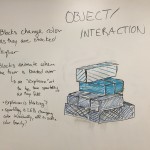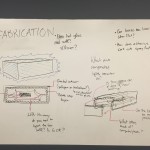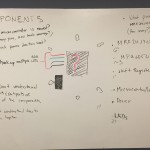I went into the play testing for this project without doing any substantial planning for the project, or even a clear idea about how to achieve the effects I wanted technically. During the play testing Danny suggested that I could achieve most of what I wanted with an accelerometer, and I think that this is true. The basic interaction for this project is:
The accelerometer knows it is on the floor
1. A person stacks a block on top of another block
The accelerometer senses the change in the X-Axis
The LEDs change color according to the height, creating color gradient
2. A tower is knocked over
The accelerometer senses the change in the X-Axis
The LEDs change color according to the height, creating explosion and sparkle effect
3. The blocks are back on the floor
The accelerometer senses the change in the X-Axis
The LEDs chage color according to the height, resets to the base color
4. Repeat
With that in mind the components in each box will be:
- MPU-6050 (Accelerometer + Gyro)
- 6 Common Anode RGB LEDs
- TLC5940 (16-Channel LED Driver)
- ATmega328P (Microcontroller)
- On/Off Switch
- Button
- Power (TBD)
The blocks themselves will be made of:
- A Shoe Box
- Frosted Glass Spray
- Corrugated Plastic
- Bubble Wrap
- Hot Glue
I’m sure that I will end up needing other components and materials as I test and prototype everything, but that list should be what’s at the heart of each box.
Something that won’t make it into this version, as it’s not central to the concept, but that I would love to add to a future version is the MRF24J40MA-I/RM (RF Transceiver Module). It would be a great way to let the boxes communicate with each other and other, as of yet unimagined, components.
My current build plan is:
But that is highly dependent on all the different component orders arriving in a timely manner. I think that one of the main challenges of this project, besides simply getting everything working, will be allowing enough time to make multiple blocks.




